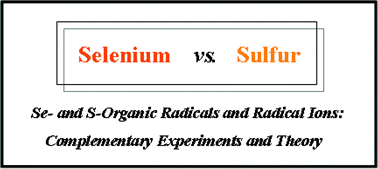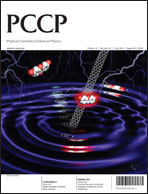A complementary experimental and quantum chemical study has been undertaken on the reactivity, formation and properties of transients generated in the reaction of selected organic selenides with hydroxyl radicals, oxide radical ions, hydrated electrons and hydrogen atoms in aqueous solution. A detailed study of the ˙OH and O˙− reactions with Me2Se revealed the formation of the respective adduct-radicals as precursors of (Me2Se∴SeMe2)+ radical cations. In case of the neutral adduct radical Me2Se˙(OH) the conversion into the three-electron bonded dimer species proceeds, in part, via the molecular (Me2Se∴OH2)+ radical cation. Absolute rate constants have been determined for all the underlying processes. The respective reactions with hydrated electrons and hydrogen atoms indicate that selenides exhibit a higher reactivity towards redox-active species than sulfides. A most interesting finding is that the reaction of Me2Se with H˙ atoms is faster (k = 4.1 × 109 M−1 s−1) than the reduction by hydrated electrons (k = 2.1 × 108 M−1 s−1), precluding an electron transfer as mechanistic background. The rationale is rather an effective dissociative attack of the hydrogen atom on the selenium. Both, the eaq−- and H˙-induced reductions of Me2Se and Me2S lead, under cleavage of ˙CH3 radicals, to the direct formation of selenol and thiol, respectively. Complementary quantum chemical studies, performed with Density Functional Theory (DFT) BHandHLYP methods, confirm this mechanism. They also reveal a generally higher thermodynamic stability of the Se-centered radicals relative to the S-centered ones, e.g., for the molecular radical anions (Me2Se)˙− (ΔH −27 kJ mol−1) and (Me2S)˙− (ΔH −16 kJ mol−1). Despite of these stabilization energies the calculations indicate an instantaneous Se/S−CH3 bond lengthening in the respective molecular radical anions. The same applies for the reaction of Me2S and Me2Se with H˙ atoms. Here the calculations indicate, in fact, no thermodynamic stability of a tentative H-adduct which, therefore, is only a fictional transition state in the H˙-induced ˙CH3-displacement process.


 Please wait while we load your content...
Please wait while we load your content...